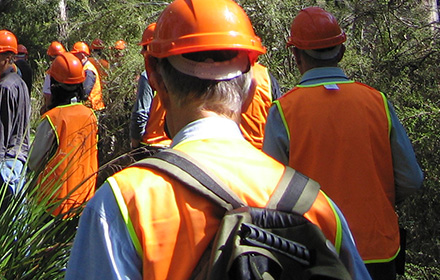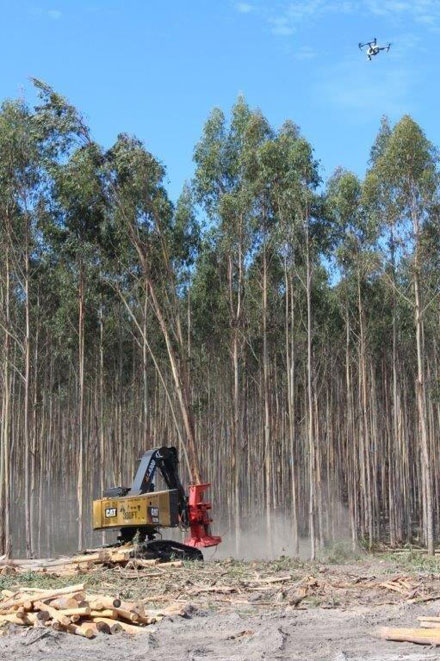
There are several careers that put their workers’ lives in danger every day just by the nature of the job: police officers, fishermen and pilots, to name a few. But what is the job with the single highest fatality rate? Logging, by a mile. Sources: AOL, the Penny Hoarder
According to the most recent data from the US Bureau of Labor Statistic 67 loggers died on the job in 2015.
While more truck drivers (885) and farmers (252) died that year while on duty, loggers had the highest number of deaths per 100,000 workers: 132.7. That is more than double the second highest, fishermen, at 54.8 per 100,000 workers.

The American average, for reference, is 3.4 per 100,000, making logging 39 times more dangerous than the average job in the US.
So what is it that loggers do on a daily basis, and why does it make them so prone to on-the-job fatalities? And more importantly, what safety regulations are in place to protect them, and is it enough?
I turned to Jeff Wimer, a senior instructor and manager of the Student Logging Training Program at Oregon State University (OSU) and chairman of the Western Region of the Council on Forest Engineering, to find out.
“The dangers to loggers are the same as they have always been,” Wimer says. The terrain of the Pacific Northwest, for example, is rugged and steep.
“The majority of this ground still requires workers who have a much greater exposure to hazards than someone in a machine.”
According to the Occupational Safety and Health Administration (OSHA), some of those hazards come from the very tools loggers rely on. Equipment such as logging machines and chainsaws, while they have come a long way from the days of homemade choppers, still pose a threat. Add the force of Mother Nature to that.
The incredible weights and unavoidable momentum of trees as they roll and slide can quickly lead to injury or death. This is only made worse when dangerous environmental conditions arise, such as uneven, unstable or rough terrain; inclement weather, including rain, snow, lightning, winds and extreme cold; and remote work sites far from health care facilities.
With fatalities so high, and on the rise since the beginning of this decade (in 2010, there were 91.9 deaths per 100,000 loggers), I wanted to know what the industry was doing in response. What safety regulations are in place currently, and why aren’t they working as well as loggers would like?
I came across a 1995 publication from the National institute for Occupational Safety and Health (NIOSH), which detailed six logging deaths and how they could have been prevented.
It also included revised regulations from OSHA that had been released earlier that year. These regulations included more job and first-aid training, more protective equipment, more requirements for the equipment used and “comprehensive manual felling procedures.”
So why aren’t those regulations working? Wimer says much of the dangers come down to working outside of a machine. “The best solution is to get a worker into a machine,” he says. “He is 10 to 20 times safer while operating machinery.” Unfortunately, ground-based machinery can only be used on a maximum 50% slope and loggers frequently come across slopes that are much steeper and must tackle the challenge sans machinery.
Jeff, as an active member on a committee that advises Oregon OSHA, is looking forward to a new technology called tethered assist, which will allow loggers to work a machine on slopes approaching 100%, or a 45-degree angle.
Tethered assist technology takes an old piece of machinery, like a bulldozer, renovates it and attaches a purpose-built winch to it, which would be tethered to the newer piece of machinery that will actually navigate the slope.
Per Wimer, “In essence, when the machine on the slope needs to move, the tethering machine provides enough tension on the cable to allow the tethered machine to navigate the steep slope.”
So what’s the holdup with this tethered assist machinery? The first problem is safety.
“The industry wants to ensure that we are not putting anyone at risk in operating these machines,” says Wimer. “Our hope is that this technology will greatly decrease the exposure to the man or woman on the ground.”
Perhaps an even bigger hurdle? “Economics,” says Wimer. “These systems will cost in the US$1.2 million range. The question is how to make that much capitalization pay for itself. How can we increase production enough while maintaining a safe work environment to make these systems cost-effective?”
The importance of logging to our way of life is clear, but how do we move forward in this industry while battling these safety issues?
Wimer believes pushing for more safety regulations and improving machinery is our best bet.
“We have to create a safer work environment if we want to attract young people to our industry,” says Wimer, who offered some advice to anyone considering a career in logging: “Be diligent,” he says. “Don’t let up. Our industry has a terrible safety record. These young [loggers] need to be leaders when it comes to safety in our industry. Logging can be dangerous, but with proper training and awareness, we can greatly reduce the accidents and and fatalities that occur all too regularly.”





